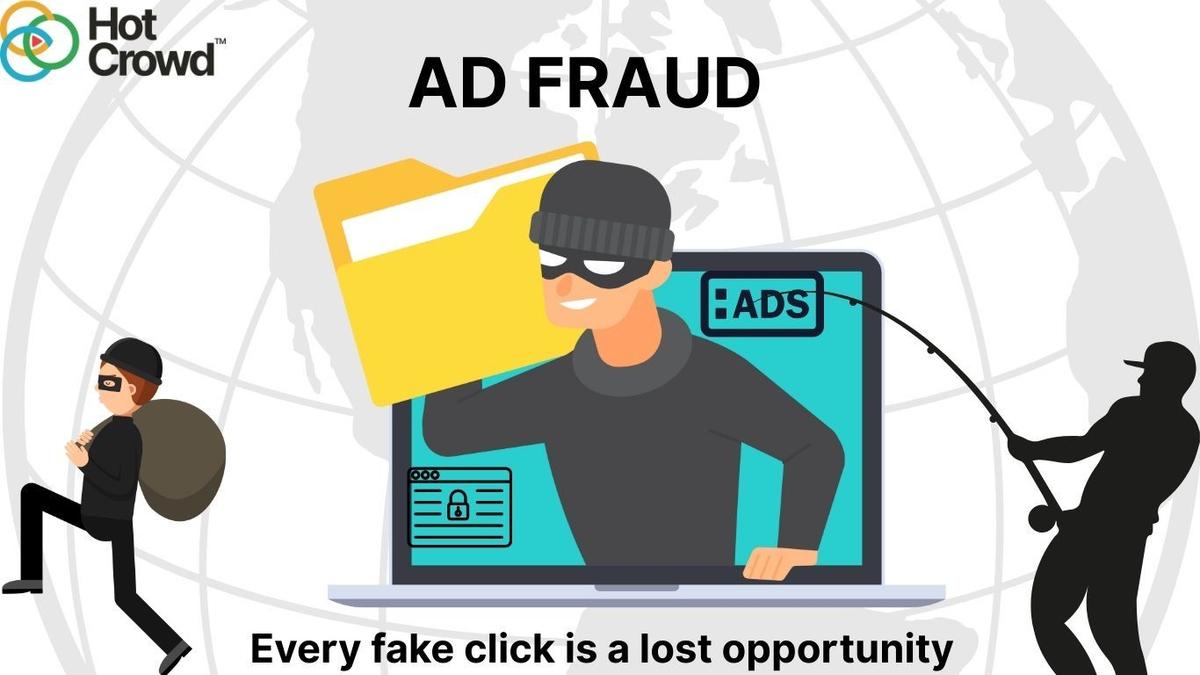Ad Fraud: Common Threats And How to Protect Your Budget
Gift - Tue May 20 2025

In the fast growing digital world, brands are pouring billions of dollars into digital campaigns to reach target audiences but lurking beneath the surface is a costly problem that continues to undermine the industry: Ad Fraud. Ad Fraud is one of the costly and frustrating challenges in digital marketing today. With global digital advertising spend is expected to reach $800 billion by 2026, fraudsters are becoming more sophisticated, draining budgets, skewing analytics and eroding trust in digital platforms.
It’s estimated that businesses lose billions of dollars annually to fraudulent ad activity. Whether you’re a small business or a large brand, understanding how ad fraud works and how to guard against it is essential to protect your marketing ROI.
What Is Ad Fraud?
Ad fraud refers to any deliberate attempt to manipulate online advertising systems for financial gain. Ad fraud prevents ads from being served to real users. Fraudsters use bots, fake websites, or spoofed domains to generate illegitimate impressions, clicks, or conversions, draining your budget without delivering real value. This action creates the illusion that your ads are performing well, while in reality your message isn’t reaching actual people.
According to the World Federation of Advertisers, marketers could lose over $50 billion annually to ad fraud if unchecked.
Why Ad Fraud Matters in 2025
With the rise of programmatic advertising, AI-driven campaigns, and cross-platform ad placements, fraudsters now have more sophisticated ways to exploit ad systems. If left unchecked, ad fraud can:
- Decrease your ROI: Money spent on fraudulent impressions means fewer resources for reaching genuine users and decrease in ROI.
- Mislead your analytics: Fraud skews analytics, making it harder to optimize campaigns effectively.
- Waste your ad budget: A portion of your advertising budget goes to non-human traffic, delivering zero ROI.
- Damage brand trust: Your ads may appear on inappropriate or low quality websites, damaging brand credibility and trust.
Common Types of Ad Fraud
1. Click Fraud:
Fraudsters use bots or click farms to simulate user engagement on pay-per-click (PPC) ads. This inflates click-through rates (CTR) and drains your ad budget without generating real leads or conversions.
Impact: Skewed metrics, wasted spend, and reduced campaign effectiveness.
2. Impression Fraud:
Fake websites or bot networks generate non-human views to increase ad impressions and claim revenue from CPM (cost-per-thousand) campaigns. Impression fraud occurs when ads are shown (or appear to be shown) to non-human traffic, such as bots or web crawlers, rather than actual users. This can heavily skew display campaign results.
3. Ad Stacking (Layered Ads):
Multiple ads are layered on top of one another in a single ad placement. Only the top ad is visible, but all are counted as impressions, all advertisers are charged for impressions even though most of them were never actually seen.
4. Pixel Stuffing (Invisible Ads):
Fraudsters insert an ad into a 1x1 pixel that is invisible to users but still registers as a view. Your impressions skyrocket, impressions are recorded yet no one saw your ad.
5. Domain Spoofing:
Fraudsters impersonate high-quality websites to sell inventory, making advertisers believe they are buying premium traffic. Ads are placed on a low-quality or fraudulent website pretending to be a premium publisher. This leads to poor brand placement and ineffective reach.
6. Install Fraud:
Bots simulate app installs to game CPI (cost-per-install) campaigns to earn commission, sometimes using device farms or emulators. This is especially common in mobile marketing.
7. Affiliate Fraud:
Bad actors fake conversions or referrals to earn commissions from affiliate programs without generating real sales. Some dishonest affiliates generate fake leads or sales through bots or stolen data to receive higher commissions from affiliate programs.
How to Protect Your Ad Budget from Fraud
1. Use Trusted Ad Networks and Platforms:
Stick with reputable ad networks (like Google Ads, Meta, Amazon DSP, or TikTok) with built-in fraud detection systems and transparency. Avoid unknown or unverified platforms Look for MRC-accredited or TAG-certified platforms that follow industry standards.
2. Implement Click and Impression Monitoring:
Use click fraud protection tools (like ClickCease, Cheq, or Lunio) to monitor and block suspicious traffic sources in real-time.
3. Analyze Campaign Data Frequently:
Watch for unusual spikes in impressions or clicks like high CTR but low engagement especially if they're not followed by conversions. High bounce rates and low session durations are red flags.
4. Use Ads.txt and App-ads.txt:
These simple files tell advertisers which ad partners are authorized to sell your inventory, great for reducing domain spoofing.
5. Implement IP Blocking:
Filter out known botnets or suspicious IPs from your campaigns to stop non-human traffic early.
6. Work With Anti-Fraud Partners:
Partner with MRC-accredited vendors like DoubleVerify, Integral Ad Science (IAS), or Moat to monitor, verify ad delivery and detect anomalies in real time.
7. Set Conversion Validation Rules:
For install or lead-gen campaigns, implement multi-step validation like email verification or time-on-site tracking to filter fake conversions.
8. Target Known Audience:
Use first- party data and retargeting strategies to focus your ads on verified, interested users.
Final Thoughts
Ad fraud isn’t going away but your defenses can evolve. With a smart strategy and the right tools, you can stop wasting your budget on fake traffic and start maximizing your ad spend where it matters. By staying informed and proactive, you not only safe guard your budget but also ensure that your ads are reaching real people who are more likely to convert.
In a world where data and results matter, fighting fraud isn’t optional, it is essential. Protecting your digital campaigns today means securing your business’s future tomorrow.